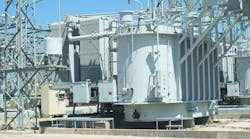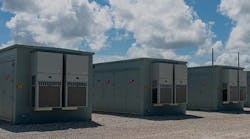Even after 30 years in the electric utility industry, I still get excited when the industry comes together to tackle a major challenge in a cooperative, effective way. With the inevitable growth in smart devices creating enormous amounts of data throughout the modern grid, the industry is facing a challenge in moving data to and from centralized control systems. The need is pressing, there are achievable solutions, and a good idea is already being pursued.
The Collaboration for Broadband
Recognizing the value of adopting a common, industrywide approach to data communications, key industry players have launched the Utility Broadband Alliance (UBBA), a collaboration of utilities and their technology partners formed "to champion the advancement and development of private broadband networks as a key enabler of the utility of the future and to foster collaboration among ecosystem participants to develop innovative solutions that cater to the unique needs of utilities." UBBA is where the industry comes together to solve a key data communications challenge for the industry as a whole.
Among UBBA's 27 member companies, seven electric utilities are leading the way: Ameren, Evergy, National Grid, Southern Linc, Xcel Energy, New York Power Authority, and JEA. Along with other major players in utility communications such as Nokia, Cisco, Ericsson, General Electric, Motorola, Sierra Wireless, Federated Wireless and Anterix, these utilities have embraced the idea that private wireless broadband networks are necessary to ensure the security, reliability and resiliency of critical distribution grid controls, share a sense of urgency in realizing the idea and recognize the value of partnering for a common goal. As Southern Linc President Tami Barron explains, "Utilities have a long history of working together, and collectively, a network of utility broadband networks will provide a powerful benefit to the industry as a whole."
Addressing the Connectivity Challenge
The electric utility business is fundamentally more complex today than it was even five years ago. According to Navigant Research, electric utilities will increase the number of connected data-creating devices by a factor of eight in the next decade, and the amount of data each device generates will also grow. However, at the core of the devices and the data is the communications network that carries this critical information.
With the digitization of the grid, utilities are constantly looking for ways to reduce their vulnerabilities to cyberattack. With attacks growing more frequent and sophisticated, cybersecurity in data, devices and communications is a front-burner issue for critical infrastructure operators.
And finally, as the electric utility industry evolves from centralized generation to a more efficient and resilient distributed model, data connectivity becomes the nerve system that makes this coordinated, interactive approach possible. But today’s amalgam of narrowband and limited-application wireless networks — many of which are nearing end of life — is too inefficient, complex and capacity-constrained to support tomorrow’s modernized grid.
To modernize and protect the grid, a utility will need an efficient, secure, scalable, broadband communications platform that it controls. Fiber connectivity is critical and foundational to wireless, providing a robust, high-capacity backbone for critical data collected by wireless networks that reach endpoints too numerous and remote for fiber to connect economically.
Wireless broadband service is readily available from commercial carriers, and that service may be appropriate for certain non-critical applications, or in cases where the utility has not yet had time to build a utility-grade system. But mission-critical applications require private networks with greater security, reliability and guaranteed speed (lower latency) than commercial carriers provide.
Private utility networks can be hardened to utility-grade standards to prevent compromise by human actors and natural disasters, reliable so they work even under emergency conditions, and resilient to quickly recover from setbacks and support power restoration efforts. And commercial networks are, by necessity, connected to the public Internet, enabling attacks from anywhere on the globe; a closed, purpose-built private network can be separated from the public Internet. By adopting a modern private broadband system, utilities can reduce the attack surface and improve their cyber security posture.
A Coordinated Effort to Benefit the Industry
UBBA has unified around private wireless broadband networks, dedicated to utility operations. But building private wireless broadband networks is no simple matter, and most utilities don’t have the expertise or resources to build a business case, select the technology, obtain access to spectrum, or deploy and operate the network and devices all on their own. That's where UBBA comes in, serving as a forum for sharing information and best practices, and eventually coordinating on technology choices, procurement and operational approaches.
UBBA helps the industry solve its modern grid communications challenge in a concerted, efficient, innovative fashion, driving economies of scale, interoperability and operational improvements along the way. It is our industry at its best, working together, bringing its considerable capabilities and influence to bear to resolve a critical challenge with an efficient, effective and long-lasting solution.


